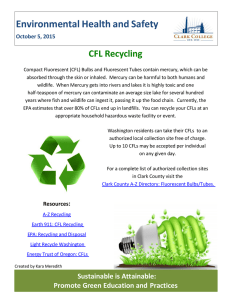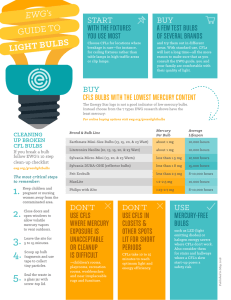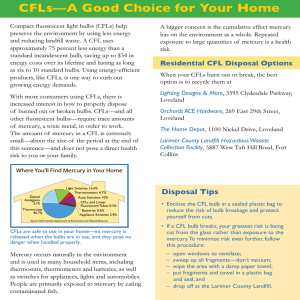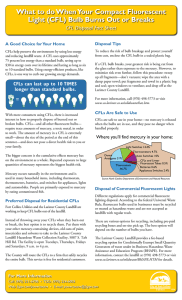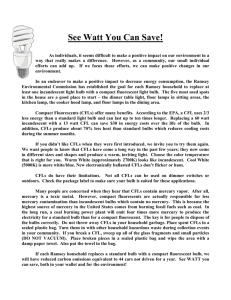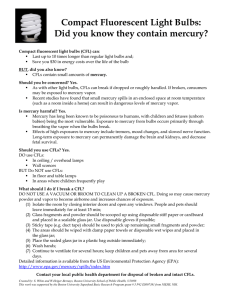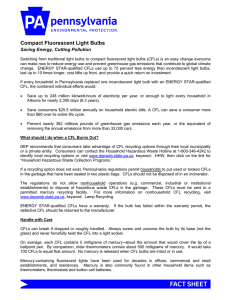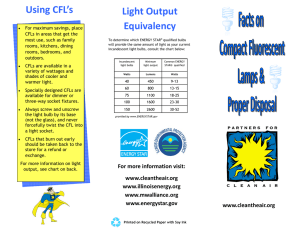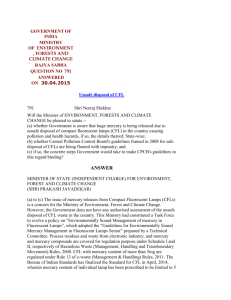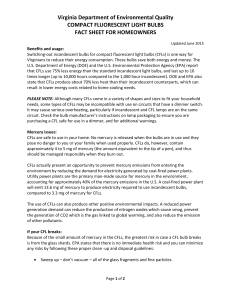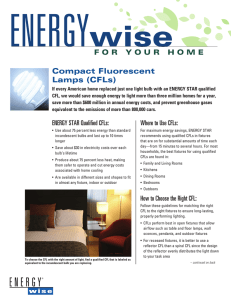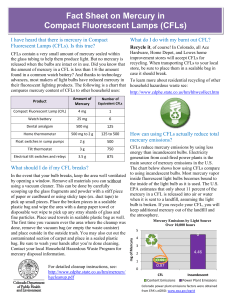Guide to Using Compact Fluorescent Lightbulbs (CFLs)
advertisement
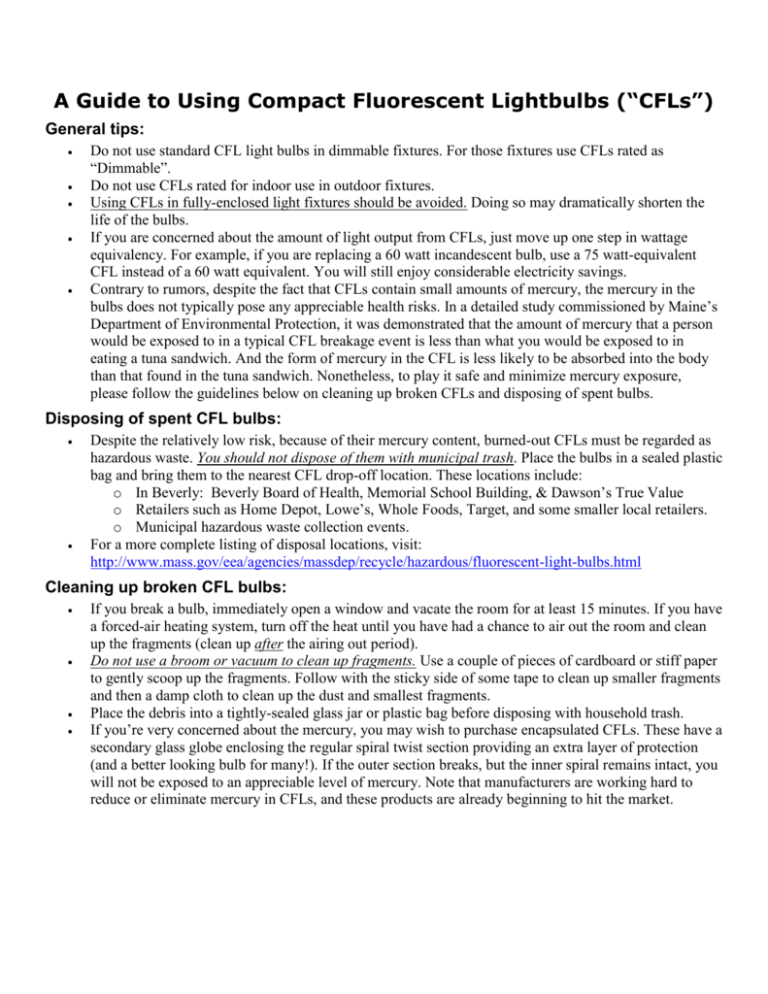
A Guide to Using Compact Fluorescent Lightbulbs (“CFLs”) General tips: Do not use standard CFL light bulbs in dimmable fixtures. For those fixtures use CFLs rated as “Dimmable”. Do not use CFLs rated for indoor use in outdoor fixtures. Using CFLs in fully-enclosed light fixtures should be avoided. Doing so may dramatically shorten the life of the bulbs. If you are concerned about the amount of light output from CFLs, just move up one step in wattage equivalency. For example, if you are replacing a 60 watt incandescent bulb, use a 75 watt-equivalent CFL instead of a 60 watt equivalent. You will still enjoy considerable electricity savings. Contrary to rumors, despite the fact that CFLs contain small amounts of mercury, the mercury in the bulbs does not typically pose any appreciable health risks. In a detailed study commissioned by Maine’s Department of Environmental Protection, it was demonstrated that the amount of mercury that a person would be exposed to in a typical CFL breakage event is less than what you would be exposed to in eating a tuna sandwich. And the form of mercury in the CFL is less likely to be absorbed into the body than that found in the tuna sandwich. Nonetheless, to play it safe and minimize mercury exposure, please follow the guidelines below on cleaning up broken CFLs and disposing of spent bulbs. Disposing of spent CFL bulbs: Despite the relatively low risk, because of their mercury content, burned-out CFLs must be regarded as hazardous waste. You should not dispose of them with municipal trash. Place the bulbs in a sealed plastic bag and bring them to the nearest CFL drop-off location. These locations include: o In Beverly: Beverly Board of Health, Memorial School Building, & Dawson’s True Value o Retailers such as Home Depot, Lowe’s, Whole Foods, Target, and some smaller local retailers. o Municipal hazardous waste collection events. For a more complete listing of disposal locations, visit: http://www.mass.gov/eea/agencies/massdep/recycle/hazardous/fluorescent-light-bulbs.html Cleaning up broken CFL bulbs: If you break a bulb, immediately open a window and vacate the room for at least 15 minutes. If you have a forced-air heating system, turn off the heat until you have had a chance to air out the room and clean up the fragments (clean up after the airing out period). Do not use a broom or vacuum to clean up fragments. Use a couple of pieces of cardboard or stiff paper to gently scoop up the fragments. Follow with the sticky side of some tape to clean up smaller fragments and then a damp cloth to clean up the dust and smallest fragments. Place the debris into a tightly-sealed glass jar or plastic bag before disposing with household trash. If you’re very concerned about the mercury, you may wish to purchase encapsulated CFLs. These have a secondary glass globe enclosing the regular spiral twist section providing an extra layer of protection (and a better looking bulb for many!). If the outer section breaks, but the inner spiral remains intact, you will not be exposed to an appreciable level of mercury. Note that manufacturers are working hard to reduce or eliminate mercury in CFLs, and these products are already beginning to hit the market.
